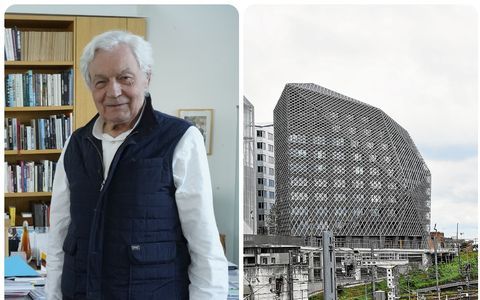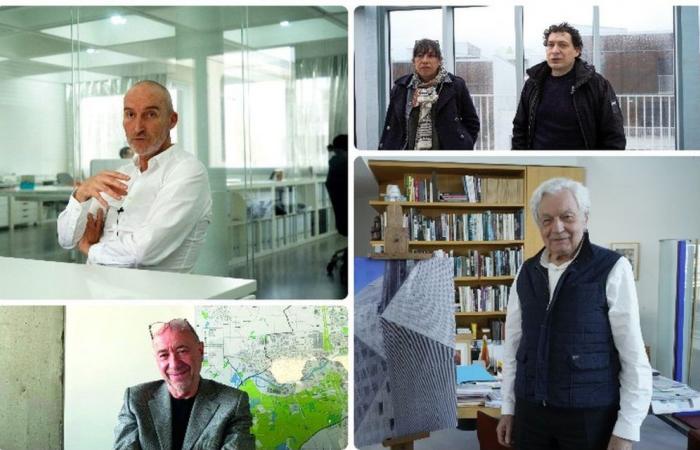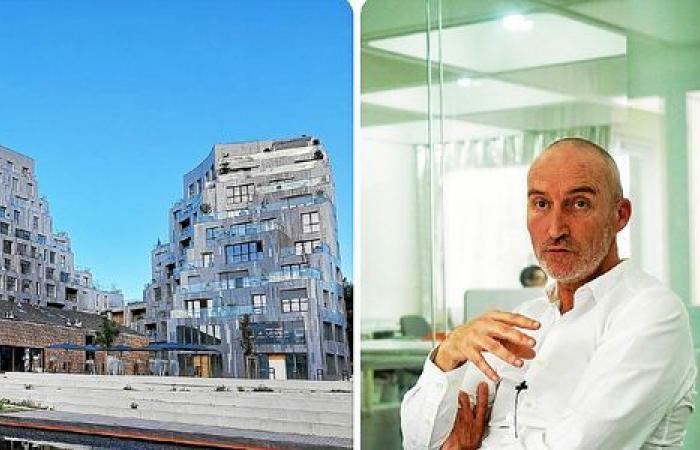“We are very happy with the result. We have carried out an atypical project which creates an unusual architectural event. » Laurent Lagadec talks about his “latest baby”, Landscape Ascension. This residence, designed with the Dutch firm MDRDV and delivered in 2022, faces the Jardin de Confluence and overlooks the banks of the Vilaine. At night, its lights are reflected on the river. These two buildings house 138 rather high-end housing units. Some of them have the unfortunate tendency… to suffer water infiltration.
Architecture in Rennes: the Monthly file
What idea for Rennes tomorrow?
The ALL Group is working on the requalification of the Hôtel-Dieu with the Parisian agency ANMA and the developer LinkCity. This project allows “an enhancement of historical heritage”. It also opens the way to “a new offer of housing and activities in the city center”. What idea does he have for the future? “I find that, since we are returning to biosourced materials, there is a wavering in architectural writing,” judges the architect. We see the return of a kind of architecture that we have already known, but which is closer to vernacular architecture (architecture which is specific to a country or a region). We are almost in the transformation of agricultural architecture into inhabited architecture. When we saw stone reappear as a supporting and structural element, many projects began to take up a style which, for me, dates from art deco. »
-
2 Maël Maurer and Angélique Gilbert, Plaisance
Plaisance? It is 200 housing units in the Saint-Martin district on the banks of the canal. This complex addresses the issue of density in a fragmented manner, explain the architects. The residences do not exceed five floors. Each apartment has direct access to the outside. “We have created urban living spaces, common but private.”
(The Telegram) What idea for Rennes tomorrow?
Maël Maurer and Angélique Gilbert are participating in the Samsic tower project at EuroRennes, planned for 2024 but for which the start of work is still pending. The future in Rennes? “The city surely still has a little way to go in terms of developing the banks of the Vilaine,” they believe. We are reintroducing plants in places that were no longer there. It would also be interesting to have a place for exchange on the city, for collective discussion to get direct feedback from users. The urban subject requires exchange between all stakeholders. In Rennes, it’s missing. »
-
3 Jean-Paul Viguier, Identity one
It is one of the first buildings facing the passengers of the SNCF train station. A large metal silhouette with flat and angular facades, overlooking the tracks. It houses shops, offices and the Arvor cinema. Completed in 2019, it is part of a group of three buildings. “It’s as if we had taken a granite rock and broken it into three.” The building is covered with an aluminum sunshade, “to recall the railway world.” Commissioned in 2016, for the arrival of the LGV, its architecture emphasizes “a dimension of speed.” Through it, Jean-Paul Viguier wanted to convey an “avant-garde” vision. “Rennes arrived at a time when the transformation needed to be accelerated.”

(The Telegram) What idea for Rennes tomorrow?
Jean-Paul Viguier does not have any projects planned in the metropolis but he does not lack the desire. “I would really like to build a wooden residential tower there,” he confides. I noticed that people are happy in the woods. » The architect draws this lesson from his first wooden tower, Hyperion, with its 50 m height, built in Bordeaux in 2021.
(The Telegram) -
4 Vincenzo Cornu, “Rennes 2030”
Vincen Cornu guides the projects of the City and the Metropolis. He notably produced the vast study “Rennes 2030”, which lays out today’s urban axes.
What idea for Rennes of tomorrow?
“The idea is to refocus the urban question in relation to Ille, La Vilaine and Le Blosne. The urban project is invented in relation to the topography, the geography of the territory. You have to understand the layout of the city. Today, the project consists of reconnecting with this geography. Parts of Rennes are just waiting to be revealed in their relationship to La Vilaine. All the streets go down there. Our challenge is to show that this relationship with water exists. It is extremely decisive. »








